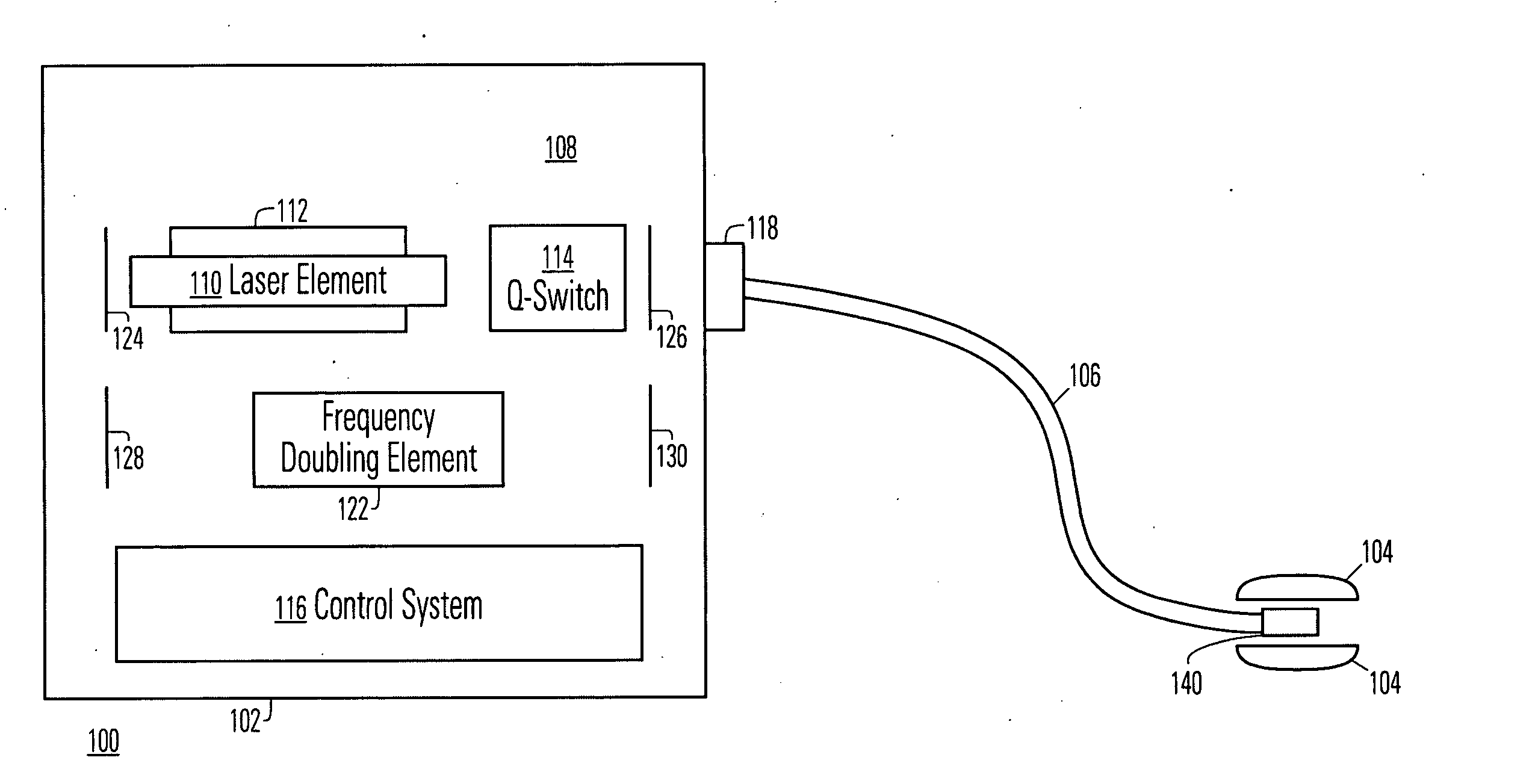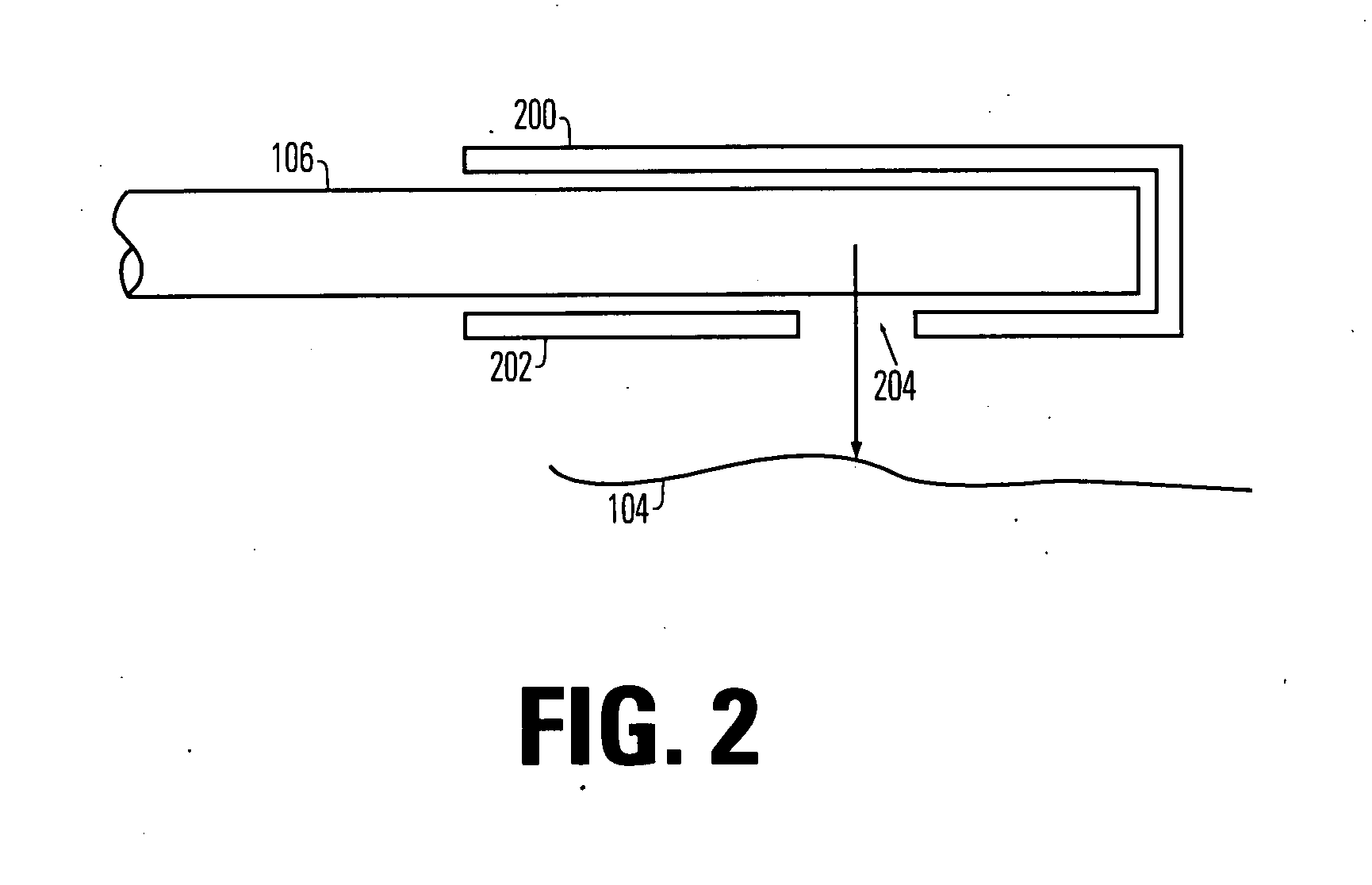Method and system for photoselective vaporization of the prostate, and other tissue
a prostate and photoselective vaporization technology, applied in the field of laser treatment of soft tissue, can solve the problems of incontinence, impotence, retrograde ejaculation, scarring of intra-prostatic urethra, and numerous side effects, and achieve the effect of reducing the incidence of dysuria and hemouria and fewer side effects
- Summary
- Abstract
- Description
- Claims
- Application Information
AI Technical Summary
Benefits of technology
Problems solved by technology
Method used
Image
Examples
fourth embodiment
this invention is to produce a high power, high beam quality laser that can project high power density laser light onto tissue. To do this the number of transverse optical modes supported by the resonator needs to be kept as low as possible.
Small M2 and high average powers can be achieved by reducing the degree of thermal lensing in the laser element. Using laser diodes as the excitation source is one effective way of greatly reducing both the size of the lasing element and the thermal gradient responsible for creating the thermal lens. The reason for this is that while 2-10% of the light produced from a flashlamp or arc lamp is converted into useful laser light 30-60% of the light emitted from laser diodes can be converted to laser light. Since the energy that is not converted to laser light is converted into heat, laser diodes deposit significantly less heat in the lasing element and as a consequence create a less powerful thermal lens. In this manner laser diodes can be used to ...
PUM
 Login to View More
Login to View More Abstract
Description
Claims
Application Information
 Login to View More
Login to View More - R&D
- Intellectual Property
- Life Sciences
- Materials
- Tech Scout
- Unparalleled Data Quality
- Higher Quality Content
- 60% Fewer Hallucinations
Browse by: Latest US Patents, China's latest patents, Technical Efficacy Thesaurus, Application Domain, Technology Topic, Popular Technical Reports.
© 2025 PatSnap. All rights reserved.Legal|Privacy policy|Modern Slavery Act Transparency Statement|Sitemap|About US| Contact US: help@patsnap.com



